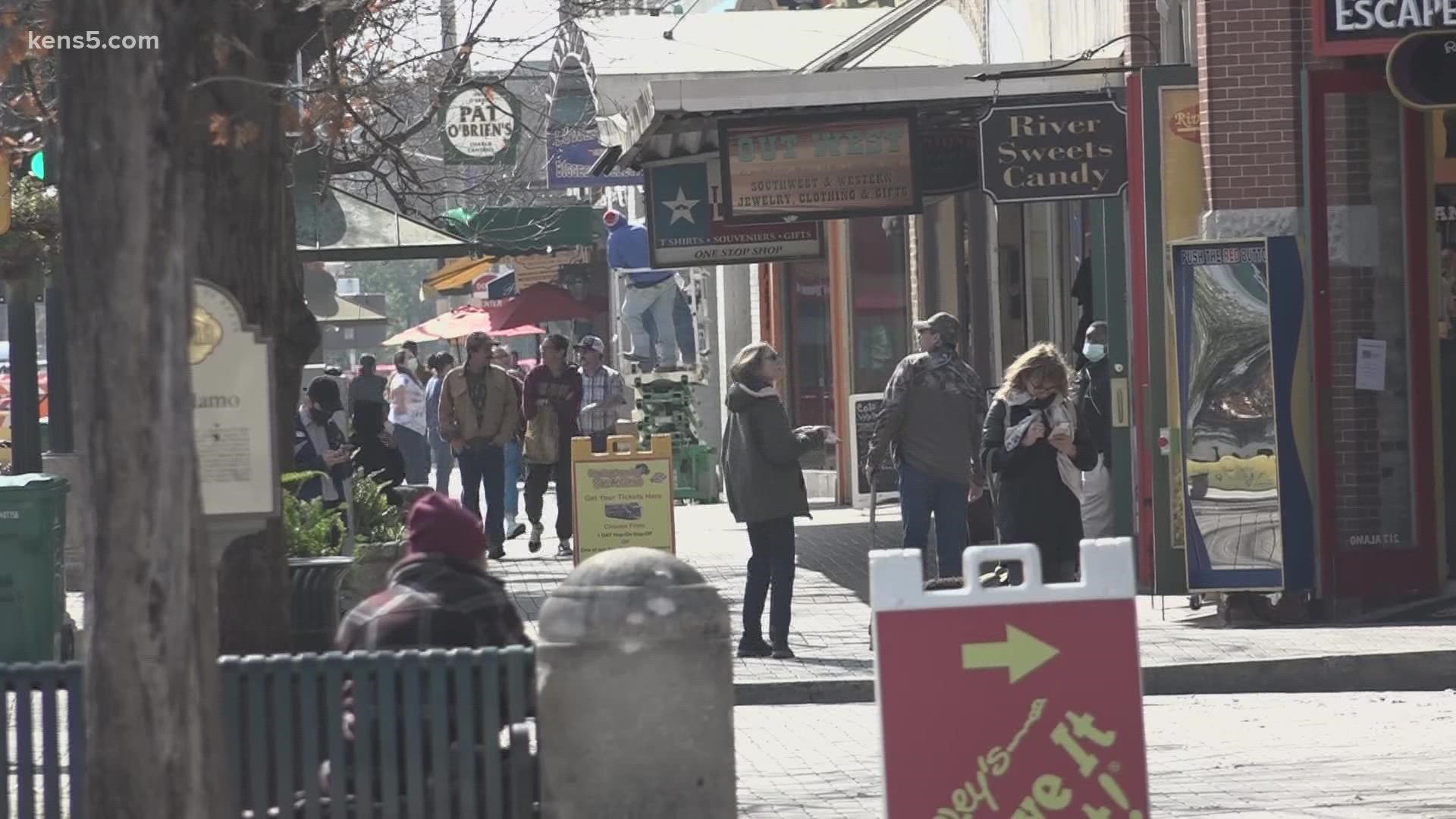SAN ANTONIO — San Antonio may not have a prestigious film festival or Hollywood's illustrious name-brand recognition, but the industry's spotlight continues to shine on the Alamo City nonetheless.
The metro was once again named one of the best large cities for filmmakers to live and work in by MovieMaker Magazine, slotting in at No. 22 for the second year in a row after being regularly mentioned for the last half-decade. Albuquerque, New Mexico retained the top spot.
In addition to its proximity to the Hill Country and "vibrant creative culture," MovieMaker specifically pointed to the broad range of shooting locations found in and around San Antonio as an enticing incentive.
"Locations are really the first entry into San Antonio; it's the first thing that filmmakers see," said Krystal Jones, interim executive director of San Antonio's arts and culture department, adding that that marketability was a key strategy when the city renewed the objective of attracting filmmakers of all stripes around 2010.
In the years since, locations as distinct as downtown's Scottish Rite Theatre and Hemisfair have been immortalized on camera, while the city council's chambers have been fashioned into fictional courtrooms and backstreets have stood in for Big Apple streets.
On a more practical level, Jones said the city in recent years has streamlined the process to apply for film permits, while also waiving fees which could amount to the hundreds of dollars in places like New York, Los Angeles or Chicago.
Not only does that incentive solidify San Antonio on the industry map; it also provides work opportunities for local personnel.
Though hearing the word "film" might most immediately bring to mind Marvel's Avengers and Tom Cruise, in Jones's work it's an umbrella term for the whole spectrum of media that's experienced through screens: TV shows, webseries projects, documentaries, photography, commercials, music videos and, sure, major movies too.
"I always say anything that you see visually – I mean, really, anything you see – there's a filmmaker behind there," Jones said. "There's someone behind that camera. And there's often many people behind that camera."
That versatility has allowed San Antonio flex its muscles as a tourism destination as well, not just by providing crews with the option to sneak away to the River Walk for lunch but also by making memorable nonfiction TV appearances. Over the next few months, the Alamo City will be featured on Discovery and "American Ninja Warrior."
And the Food Network was in town just a few months ago highlighting San Antonio's Dia de los Muertos traditions.
"They connected with local artists, and it was fantastic," Jones said. "This is something that travelers are going to see when they watch the Food Network, and so there is that cross-collaboration which we call 'film tourism.' You'll see people that'll see something and say, 'That's really cool. I want to go there.'"
Fort Worth (No. 25), Dallas (No. 15) and Austin (No. 8) also appeared on MovieMaker's 2022 list, rounding out Texas's representatives. But Jones says there's no competition; in fact, all four cities (and several others) are part of the Texas Association of Film Commissions, in which representatives from each metro collaborate to grow the Lone Star State's position on the filmmaking map.
"When we have a unified message, it really helps all cities," she said.
Anyone in the city looking to make their home or business available as a potential film-shoot location via the department's official database can do so here.
Improvising during a pandemic
What San Antonio lacks in a South By Southwest or Sundance festival it makes up for with a range of diverse filmmaking voices, many of them local. In addition to the annual San Antonio Film Festival, the Alamo City also hosts showcases for Black filmmakers via the San Antoni Black International Film Festival as well as CineFestival, which touts itself as the country's longest-running Latino film festival.
The Department of Arts and Culture, in an effort to boost homegrown artists while attracting out-of-state ones, provides funding for some of those festivals, as well as grants for local projects and the annual #FilmSA Contest, geared towards motivating creativity in San Antonio's youth.
Those initiatives are gaining steam once again as the world gets moderately closer to normal after COVID-19. But aside from department funding taking a hit during the pandemic (that funding largely coming from tourism, all but nonexistent during 2020's lockdowns), Jones said their mission was never in real danger of running out steam.
Instead, it just took a bit of improvisation.
"2020 events were shut down. Right? And instead of canceling them entirely, San Antonio – in true San Antonio spirit – said, 'The show must go on, but let's do it virtually.' So there were events like the Martin Luther King march went virtual and was actually broadcast on TV. And behind the cameras were local filmmakers, and they requested permits."
The result was a six-day shoot, and an innovative video project led by San Antonio native Ya'ke Smith which shed new light on one of the biggest events of its kind in the country.
Elsewhere, Jones said her team worked around an inability to continue traditional marketing methods by employing an "organic approach" to continue showcasing locations, welcoming filmmakers looking for those locations and also noticing what the pandemic confirmed: people will always have a desire for new content, which means there will always be projects to attract.
And, in addition, there will always be potential for new partnerships.
"The thing that I really appreciate about the San Antonio film community is that, just like the rest of San Antonio, we're incredibly collaborative, creative, resilient," Jones said. "I see it through connecting our local filmmakers. It's just that collaborative nature—it just makes a lot of room for creativity to grow."

